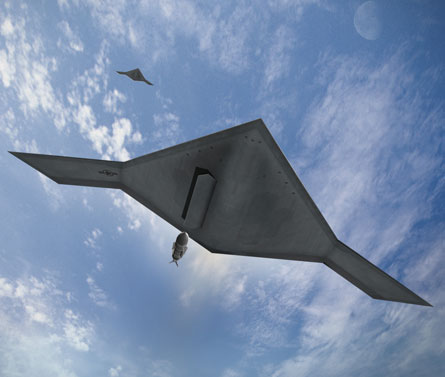Northrop Grumman has won a landmark victory in the strike aircraft market, beating Boeing for a $635 million contract to prove the viability of a carrier-based, unmanned bomber.
The US Navy announced on 1 August that it had selected Northrop's X-47B over the Boeing X-45N, a derivative of the land-based X-45C.
The aircraft will be used to demonstrate that an unmanned aircraft in a tailless configuration with a low-observable planform can land on a carrier deck and prove non-disruptive in deck operations with manned aircraft.
The Unmanned Combat Air Systems Technology Demonstrator (UCAS-D) has a six-year timeline, with the first carrier landing of the X-47B scheduled for 2011.

The navy's budget documents show that the total programme cost is estimated to be $1.5 billion. It was not immediately clear why less than half that amount was put under contract last week.
Navy officials will use the demonstration to inform a decision on acquiring a fleet of such aircraft to perform a long-range strike role that has been missing from carrier decks since the retirement of the Grumman A-6E Intruder in the early 1990s. That decision is to be made after 2013
"This is a critical step in efforts to develop future naval aviation combat capabilities," says US Navy Capt Rich Brasel, UCAS-D programme manager.
Northrop's victory re-establishes the company as a player in the carrier-based strike aircraft market. The X-47 family, which includes the X-47A Pegasus, was invented for the sole purpose of launching from navy carriers and has a long history with the naval aviation community.
"The UCAS-D award is the culmination of an eight-year effort with the navy to show the benefit of melding the capabilities of a survivable, persistent, long-range UCAS with those of a CVN-21-class aircraft carrier," said Gary Ervin, vice-president for Northrop Grumman's Integrated Systems Western Region sector.
Northrop is building two prototype air vehicles powered by non-reheated Pratt & Whitney F100 engines in Palmdale, California. Flight tests are scheduled to begin in 2009.
Boeing's loss could have a severe impact on that company's long-term presence in the strike aircraft market. With no new development contracts to follow the F/A-18E/F and F-15E production programmes, Boeing must find new work to keep engineering and production know-how within the company until the next opportunity arises.
Boeing is not entirely removed from new developments with carrier-based strike aircraft. The company has a contract with the navy to continue demonstrating flight control software for unmanned carrier operations with F/A-18s.
Source: Flight International



















